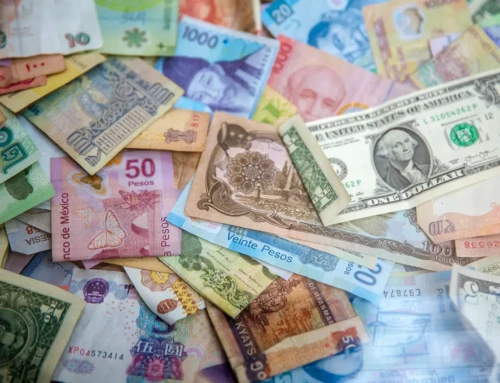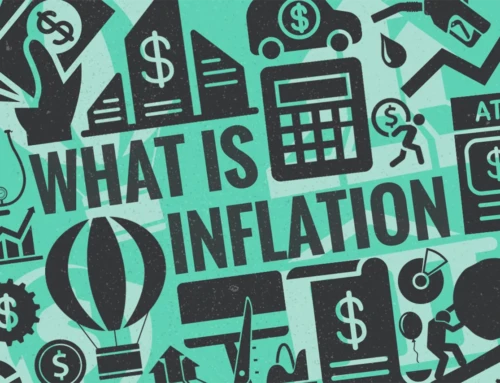Tsunami

There is a wave of defaults and bankruptcies building in the economic ocean and it will soon become a tsunami.
This tsunami will swamp the bond market and then the Federal Reserve, if they really do what they’ve said they’re going to do when the tsunami comes. The Fed may eventually rise to the surface alive, but it will be a shell of its former self, and the global economy will change and evolve—for the better.
When you have an economy that’s as addicted to cheap, easy debt as ours is, and where the debt is as interconnected by hedging instruments as ours is, even the smallest movement on the surface creates a ripple effect that is capable of major damage. When you have a two-to-three month hard stop on the entire global economy, combined with an all-out international price war on the world’s most widely-traded commodity, that does not cause a ripple effect: it causes a tsunami.
On one side of the pond
Prior to the spread of Covid-19, the debt of US shale producers made up close to 40% of the US junk bond market. Due to the intensive and expensive extraction process involved with hydro-fracking, companies that do hydro-fracking lose money every day when the price for a barrel of oil falls below $60. Since 2014, crude oil has clung to the $60-ish per barrel price level with some dips below and bumps above. It was $62 per barrel just before Covid-19 hit. Then the demand and corresponding price collapse inspired Saudi Arabia and Russia to apply pressure to their American shale-producing competitors by increasing production output, and the price for a barrel of oil collapsed to $0. It is now back up to about $35 per barrel on the promise to reduce production output. The result will be the demise of American shale producers, and a corresponding wave of bankruptcies and bond defaults.
On the other side of the pond
Forty million people lost their jobs between February and June. All those people and the families they live with have been appealing for rent forgiveness and mortgage forbearance all along that time continuum. For the mortgagees that have sought forbearance, this gives them three months off from their monthly mortgage payment. At the end of that four month period, they will have to ask their mortgage servicers to modify their loan agreements so their amortization (payment schedule) can be reset to spread the lump sum that’s accumulated from those three delayed payments. Some of those lenders will be inclined to accommodate; others will not. The mortgage holders that see the balance of the loan is low relative to the property value in question will not be as inclined to accommodate because they can foreclose and make a profit on the sale. The ones that see the loan balance is high relative to the property value will be more inclined to accommodate because there’s more risk that they end up holding the property for a longer period of time and losing money on it. Further, we learned in the housing crisis of 2007-2009 that a lot of mortgage borrowers tend not to communicate openly and rapidly with their mortgage holders when they start to fall behind. Rather, they stick their heads in the sand and they hope the problem fixes itself–until it doesn’t. One thing is for sure: mortgage delinquencies have soared, so defaults will, too, when the three-month forbearance period ends.
The US mortgage market is an $11 trillion ocean of debt. The US junk bond market stands at around $1.2 trillion. The wave in the mortgage market will make the one from the junk bond market look like an ankle slapper. But both combined, and all the credit default swap contracts connecting them to millions of unwitting investors (because remember the derivatives market place remains a frontier of unregulated, untracked morass of contracts connecting investors and institutions to one another), will result in a tsunami of defaulting debt that no one will want to buy except The Fed. Or so they say.
When it hits
At the nadir of the downturn in asset prices in mid-March, The Fed announced that it would backstop ALL the bad debt: Treasuries, municipals, corporates, mortgage-backed, and even the junk.
Since then, The Fed has increased their balance sheet from about $4 trillion before Covid-19 to $7 trillion, which in plain English means they “printed” (I use air quotes because they don’t really print the dollars anymore, they just click their mouse and the dollars appear on their digital balance sheet), just shy of $3 trillion and spent it primarily on US Treasuries, mortgage-backed securities, and corporate bonds (in that order).
This is the single biggest transfer of wealth in human history. The Fed has effectively taken money that future generations would ostensibly pay in taxes and handed it to the hedge funds and private equity managers who grossly over-leveraged in taking the risk that lead to the March drop in prices. Again. And our elected officials on both sides are, of course, among the holders of the funds The Fed bailed out, so nothing has changed. Nothing will while they still sit where they do.
The Fed has not yet had to fulfill their promise to buy ALL the bad debt because market participants went right back to the trough and loaded up on more debt (about another $500 billion or so), on the promise that The Fed will bail them out again.
Two choices lay ahead for The Fed
Money is moving again for now, but rest assured the defaults and bankruptcy filings are rising and when they peak, and the tsunami rolls, The Fed will be faced with two choices.
The first is to do nothing and let all that debt default, resulting in a deep global depression and corrosion of faith in the lending markets that could take decades to heal. This could be the case if their member banks (remember ultimately, The Fed is owned by its member banks), tell Powell and the board all their friends got out and they have no interest in bailing any more investors out. The odds of this scenario increase if markets hold up until after November.
The second is to “print” another $10 or $30 trillion and buy all that debt, resulting in a period of stagflation (persistent high inflation combined with high unemployment and stagnant demand in a country’s economy) that makes the 1970’s period of stagflation look like a walk in the park. Look for this option if things get choppy again before November.
But when, not if, bond market participants become itchy again, they will have to do something, even if that is nothing.
Where are the lifeboats and when will we see land?
So, the downside to all this is, of course, that we have been sold a bill of goods. Markets are not a level playing field. For all the “free market” believers, if we really had free markets, why would The Fed need to keep bailing out institutional market participants with taxpayer dollars? It also means major adjustments are coming. Things are not going “back to normal” when we can go back to eating in a restaurant, because what we had before Covid-19 was not normal, either. There is no normal. But that’s the good news. Everything changes. All the time. The sooner we all come to grips with that, the easier the adjustments will be for us emotionally and financially.
Look around. The dynamics of power are shifting. The people that have been in power for decades and the institutional tools they have used are beginning to crack. This tsunami began with a seismic shift in our collective consciousness. The evidence of more and more people waking up to what has really been happening is mounting, and the next evolution of our selves will be better and stronger.
What can you do right now?
There are actions you can take to help in the meantime.
Right now, millions of mom and pop investors are being told to stay in the stock and bond markets, or even to buy more. This is not the time to load up on these assets. Now is the time to ensure the leaks in the hold are closed, or tightened as best as possible, and look around at what options exist for you to hedge risk and mitigate damage.
Eventually, there will come a point when The Fed has lost all credibility, or they have chosen to back away. This will be the height of the tsunami, when things seem their worst, and the idea of buying seems crazy, but the selling and buying that occurs then will simultaneously destroy and create fortunes. That’s not to say you should wait for this. As noted above, don’t just follow the herd. Make sure you understand the risks to your financial well-being and make any adjustments you can.
Written
June 15, 2020
Read Time
7 min read
More Posts




